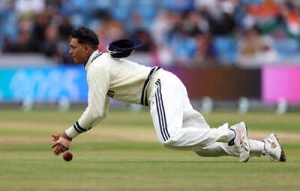The NBA offseason is in full swing, and while free agency often dominates headlines, a flurry of trades is reshaping team rosters across the league. Several high-profile players have already been involved in significant deals, and the recent opening of the free agency window has only accelerated the trade momentum.
Before more deals materialize, let's analyze the most impactful trades that have occurred so far, evaluating each team's moves and assessing their potential impact on the upcoming season.
Spurs Grade: B
The Spurs addressed a need for floor spacing by acquiring Olynyk. His ability to stretch the floor as a 6-foot-11 forward complements Victor Wembanyama. Olynyk's 3-point shooting (42% last season) allows the Spurs to maintain a "5-out" offensive look, particularly beneficial given that recent lottery picks aren't known for their floor spacing.
This move indicates the Spurs' increased focus on winning in 2025-26. Branham and Wesley, former first-round picks, hadn't significantly contributed to winning and saw their roles diminish last season. This trade might also affect Jeremy Sochan's role, as Olynyk's performance could impact Sochan's playing time and future with the team.
Wizards Grade: B
The Wizards made a strategic move by sending Olynyk, acquired in a previous deal, to a team with better winning prospects. It remains to be seen if Branham and Wesley will have long-term roles in Washington, as the team has a crowded roster. Wesley might have a better chance to become a rotation player, given his potential as a defender and ball-handler.
Clippers Grade: B
This move could be the first of several by the Clippers, who created a need at shooting guard by trading Powell. The Clippers may be a destination for Bradley Beal if he completes a buyout with the Phoenix Suns. While neither Beal nor Collins is as valuable as Powell was last season, Collins addresses the Clippers' need for size at power forward.
Collins, who played center for the Jazz, can provide rim protection and floor spacing. However, it's unclear why the Clippers had to give up a second-round pick, and there are concerns about the defensive impact on the second unit. The trade potentially strengthens their ability to match up with potential playoff opponents.
Heat Grade: A
The Heat acquired a dangerous scorer in Powell, addressing a need at shooting guard. Powell essentially brings what the Heat thought they were getting with Terry Rozier. Adding Powell upgrades the Heat without sacrificing flexibility, as Powell is on an expiring contract. The Heat did not include any draft picks in the deal, which is a remarkable bit of fortune.
Jazz Grade: A-
The Jazz locked in value for Collins in the form of a second-round pick and positioned themselves as a team that other teams will call to shed salary midseason. By taking Anderson and Love on exceptions, Utah created a large trade exception that will be the largest in the NBA. Moving Collins also makes it easier for Utah to accumulate losses, aiding their hopes of adding another high lottery pick.
Wizards Grade: A-
The Wizards seized a buy-low opportunity by acquiring Whitmore, a former first-round pick with productivity in limited minutes. Whitmore joins a youth movement in Washington. While the Wizards have many players on the wing, Whitmore's potential should earn him playing time on a rebuilding team without the scrutiny he faced with the Rockets.
Rockets Grade: C+
It's unclear how long Whitmore was willing to wait his turn in Houston. This feels like an underwhelming conclusion to what looked like a steal of a draft pick. The Rockets got Whitmore, who had been projected in the high lottery, with the No. 20 pick, but they got only second-round picks in return a year later. Moving Whitmore gives the Rockets more flexibility with the lower luxury tax apron.
Pistons Grade: B
Shooting became an urgent need for the Pistons early in free agency. Robinson, a career 40% 3-point shooter, addresses that need. He could fill Hardaway's starting role, spacing the floor alongside Cunningham and non-shooters Jalen Duren and Ausar Thompson.
Heat Grade: B
Fontecchio was something of a forgotten player in Detroit last season. Fontecchio is versatile enough defensively to be a good value in the final season of his contract. The Heat now have a full roster and are about $5 million below the tax line.
Nuggets Grade: B+
The Nuggets addressed their need for a reliable backup center by acquiring Valanciunas. Figuring out how to succeed with Nikola Jokic on the bench has been a constant struggle for the Nuggets. Valanciunas offers the best combination of experience and ability behind Jokic.
Kings Grade: C-
The Kings needed to make this deal to sign Dennis Schroder without pushing into the luxury tax. There's little reason to expect Saric to be more effective with the Kings than he was with the Nuggets. Sacramento gave up two second-round picks to get Valanciunas precisely because the team didn't have enough depth behind All-Star starter Domantas Sabonis.
Nuggets Grade: C
Johnson and Porter are similar players, but Porter's contract is larger and longer. The difference is crucial for the Nuggets, who were close to the lower luxury tax apron and will be more limited in 2026-27. The Nuggets have to do more than just pocket the savings in terms of tax payments over the next two seasons to justify giving up the only first-round pick Denver could trade outright. This trade has to help Denver's chances of winning a championship during Jokic's prime.
Nets Grade: B
A first-round pick isn't a thrilling return, given how much money Brooklyn is saving the Nuggets. The market for Johnson might not have been as robust as the Nets were hoping. But an unprotected Denver first-round pick in 2032 has considerable upside.
Hornets Grade: A
The biggest potential downside to this trade for the Hornets is Sexton might be too good for them to bottom out again in 2025-26. Sexton should help the Hornets be more competitive. Swapping Nurkic for Sexton doesn't appreciably change the Hornets' cap sheet.
Jazz Grade: D
Based on the fact that the Jazz had to attach a second-round pick, it doesn't appear there was much of a market for Sexton. After adding Walter Clayton Jr. to recent first-round picks Isaiah Collier and Keyonte George, Utah had urgency to move Sexton and create playing time at the point. Giving up a draft pick to facilitate this swap shows what happens when teams feel forced to make a move.
Cavaliers Grade: A
After more than two full years off the court, Ball returned at something close to full strength for 35 games last season. Ball has evolved into a strong secondary playmaker and an outstanding help defender.
Bulls Grade: B-
Again, Chicago is wisely swapping older (Ball is 27) for younger (Okoro is 24). On a team that doesn't aspire to a deep playoff run, Okoro's iffy shooting is less of a concern. Throughout his career, Okoro has been a difference-making defender.
Suns Grade: C+
The combination of the Suns making this trade and then selecting another Duke center, Khaman Maluach, moments later was confusing. Phoenix can do something similar with Maluach and Williams. The pick going to Charlotte in 2029 will be the worst coming from one of three teams: the Cleveland Cavaliers, Minnesota Timberwolves, and Utah Jazz. Giving up two picks puts the Suns back in the familiar position of having none available to trade. Phoenix is somehow getting even more expensive with this deal. By 2026-27, this deal will be even more costly for the Suns financially because Williams will be due a new contract.
Hornets Grade: B-
A swap in 2030 and 2024 first-round pick Dalton Knecht, this version doesn't have nearly as much upside. It's unlikely the 2029 first-rounder will be any better than in the 20s. On the plus side, Charlotte locks in a pair of first-round picks.
Celtics Grade: B
Part 2 of the Celtics' financial reset is here. Besides his return from postseason leg surgery, illness was an issue for Porzingis this past season. Based on his track record, Porzingis was truly a luxury for Boston. Swapping Porzingis' salary for that of Niang is enough to bring the Celtics temporarily under the second apron threshold. By itself, the trade saves Boston about $150 million in tax payments.
Stephen A. on Suns' draft night.
Stephen A. Smith reacts to the Suns drafting center Khaman Maluach and trading for center Mark Williams on draft night.
There is work for the Celtics to do at center, where their only players under contract are Neemias Queta and Xavier Tillman Sr.
Hawks Grade: B
In the short term, Porzingis is a good fit for a young Hawks frontcourt that is longer on athleticism than shooting. If that doesn't work, pending a possible extension for Porzingis, this trade also gives the Hawks the option of resetting next summer when he will be a free agent and Young will have a $49 million player option.
Nets Grade: A
As the only NBA team with appreciable cap space, the Nets were able to command a premium price to take on Mann's contract. It's also possible Brooklyn could rehab the value of Mann, who isn't far removed from being a dealbreaker when the Clippers were trying to land James Harden at the start of the 2023-24 season.
Pelicans Grade: C-
Essentially, this four-player deal boils down to a challenge trade of contracts: Would you rather have one year of McCollum at $30.7 million or two years of Poole, making $31.8 million and $34 million plus incentives he's unlikely to reach?
Wizards Grade: B+
On paper, trading a 26-year-old guard for one who will turn 34 by the start of training camp is an odd move for a rebuilding team. With Poole gone, Washington now boasts the league's cleanest books going forward. McCollum and Olynyk should fit with a rebuilding environment so long as they stick around.
Celtics Grade: B-
We knew financially motivated trades were coming for the Celtics, who entered the offseason more than $20 million above the NBA's projected second luxury-tax apron with an incomplete roster. Swapping Holiday for Simons doesn't necessarily provide massive savings for the Celtics, but it gets them incrementally closer to the second apron while also becoming much younger in the backcourt. At 26, Simons is nine years younger than Holiday and just hitting his peak.
Trail Blazers Grade: C-
Patience is the most valuable commodity in the NBA. Despite the Blazers' second-half run securing new contracts for coach Chauncey Billups and GM Joe Cronin, this trade reflects urgency to get back to the playoffs after a four-year drought.
Rockets Grade: B+
Although Durant is no longer as singular a scorer as in his prime, he's still as good as just about anyone creating his own offense.
Suns Grade: B
This Durant trade is surely the beginning of a roster makeover rather than the completion of it. Pending those future moves, this Durant trade seems pragmatic for the Suns, who never stood a chance of recouping the value they gave up to get him from the Nets at the 2023 trade deadline.
Orlando Grade: C+
In many ways, this unexpected beginning to the NBA trade season is the spiritual descendent of the New York Knicks giving up five first-round picks and a swap for Mikal Bridges on the eve of last year's draft.
Memphis Grade: B
The Bridges analogy doesn't hold on the other side of this trade. If Memphis was convinced this group was no longer good enough, resetting around Jackson with three extra first-round picks plus one to replace this year's first-rounder (sent to the Washington Wizards at the deadline to shed Marcus Smart's salary) makes some sense. But trading Bane only deepens the Grizzlies' need for top-end talent.
These trades represent just the initial moves of what promises to be a dynamic offseason. As teams continue to assess their needs and explore opportunities, more deals will undoubtedly reshape the NBA landscape, setting the stage for an exciting 2025-26 season.
Newer articles
Older articles
 Chess Star Praggnanandhaa Weighs In on Carlsen's Frustration After Loss to Gukesh
Chess Star Praggnanandhaa Weighs In on Carlsen's Frustration After Loss to Gukesh
 Samsung Galaxy A35 5G and A55 5G: Official Pricing and Availability Announced
Samsung Galaxy A35 5G and A55 5G: Official Pricing and Availability Announced
 India's Fielding Woes Blamed for First Test Defeat Against England: Former Selector Voices Concerns
India's Fielding Woes Blamed for First Test Defeat Against England: Former Selector Voices Concerns
 Headline: Viral Optical Illusion: Can You Find All the Hidden Animals? Only 1% Succeed
Headline: Viral Optical Illusion: Can You Find All the Hidden Animals? Only 1% Succeed
 Shadman Stands By Bangladesh Batters After Day 1 Struggles Against Sri Lanka
Shadman Stands By Bangladesh Batters After Day 1 Struggles Against Sri Lanka
 Norris Claims Thrilling Austrian GP Victory After Intense Duel with McLaren Teammate Piastri
Norris Claims Thrilling Austrian GP Victory After Intense Duel with McLaren Teammate Piastri
 Jake Paul's Title Dreams: Analyzing Championship Prospects and Potential Opponents
Jake Paul's Title Dreams: Analyzing Championship Prospects and Potential Opponents
 Gavaskar Urges India to Unleash Kuldeep Yadav in Second Test Amid Bumrah Fitness Concerns
Gavaskar Urges India to Unleash Kuldeep Yadav in Second Test Amid Bumrah Fitness Concerns
 iQoo Z9 Turbo Leaks: Snapdragon 8s Gen 3, 1.5K Display, and Massive Battery Detailed
iQoo Z9 Turbo Leaks: Snapdragon 8s Gen 3, 1.5K Display, and Massive Battery Detailed
 Mirabai Chanu Reveals Relentless Dedication: Training and Weight Always Top of Mind, Even During Family Time
Mirabai Chanu Reveals Relentless Dedication: Training and Weight Always Top of Mind, Even During Family Time